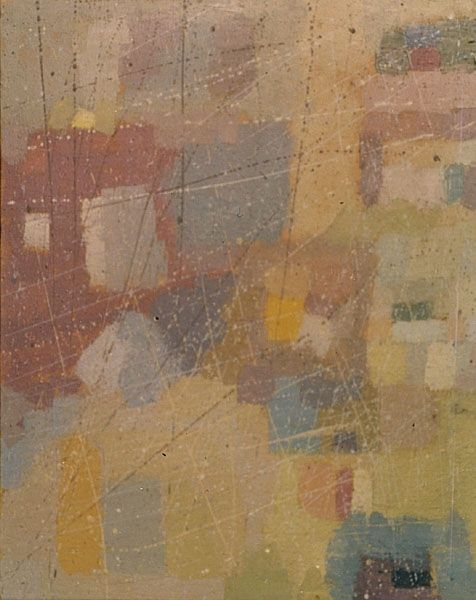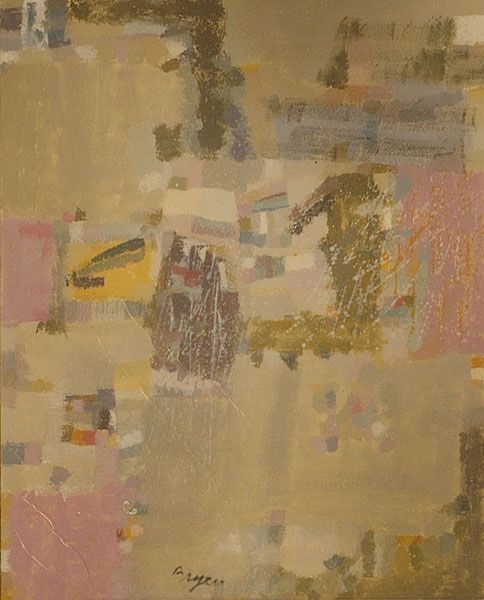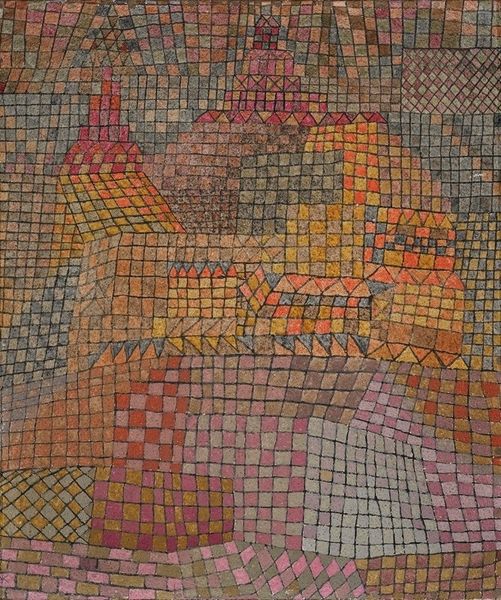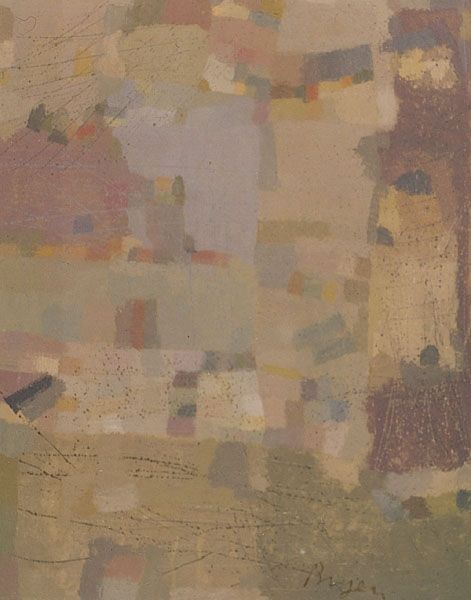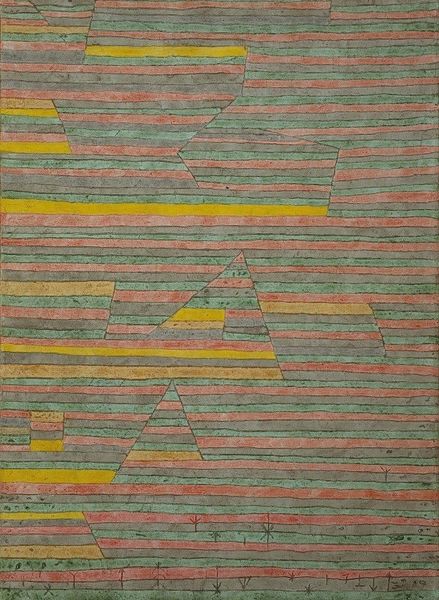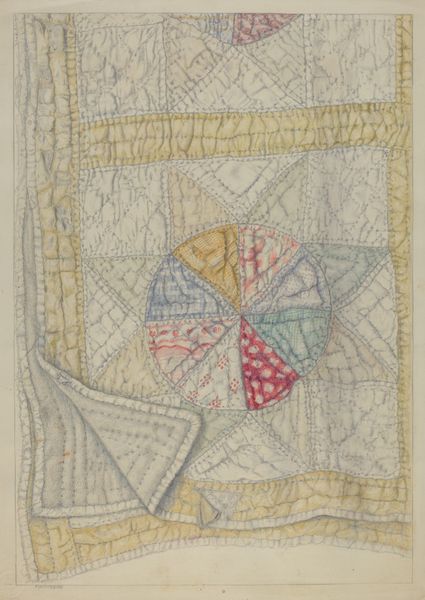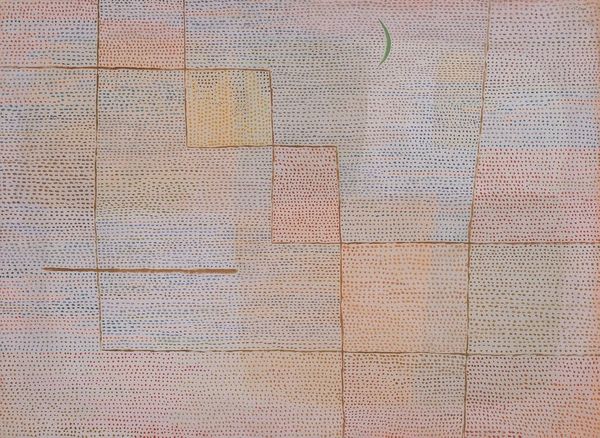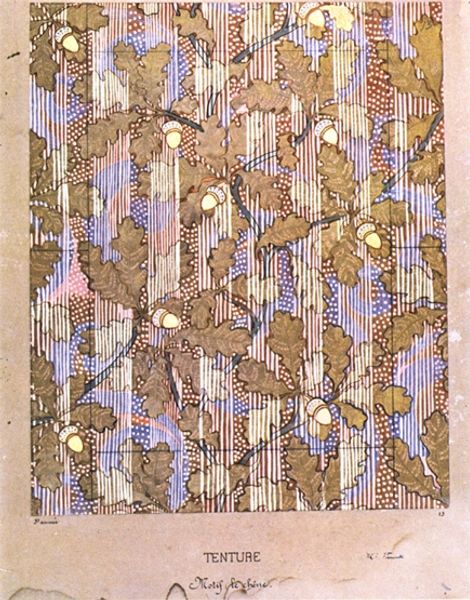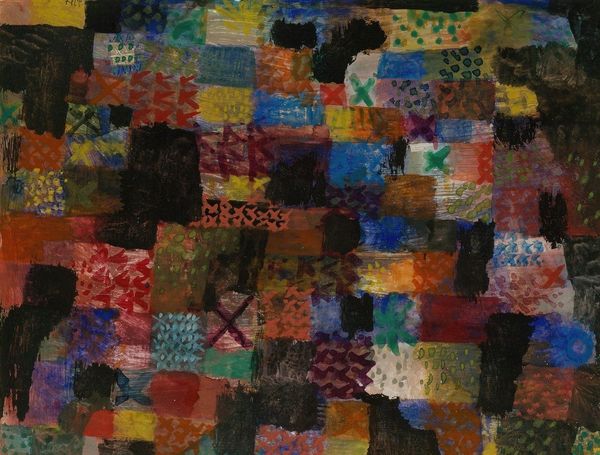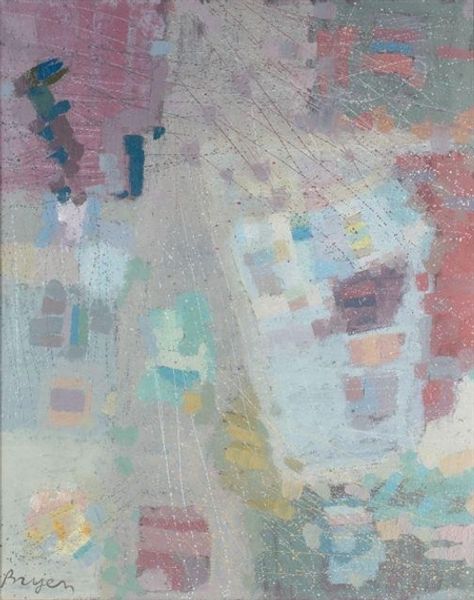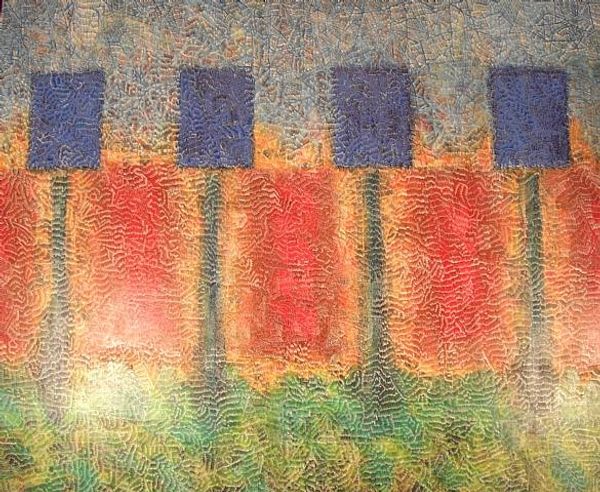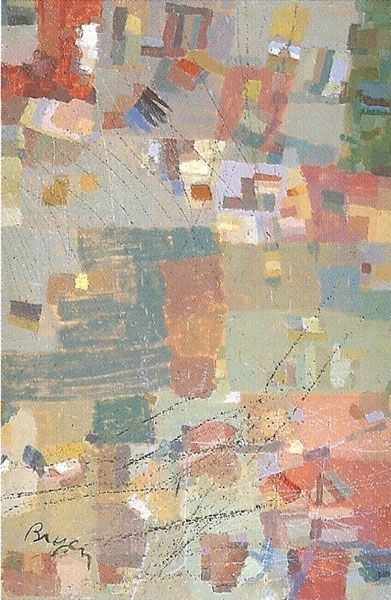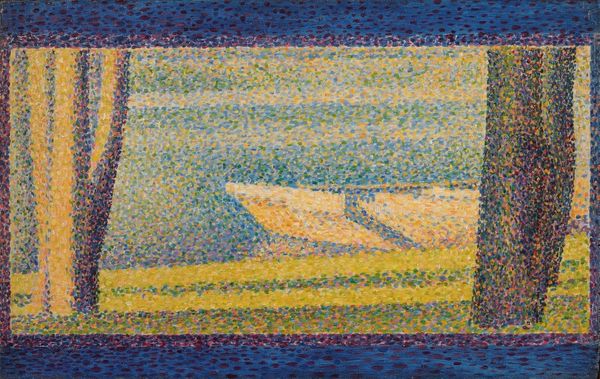
Dimensions: 67.2 x 54.9 cm
Copyright: Public domain
Paul Klee painted "Castle Garden" using oil on canvas, and here we observe how he employed a delicate, pointillist technique to render the architectural forms. The entire composition is structured by a grid-like pattern, filled with small, individual dabs of color. This creates a shimmering surface, where the hues of earthy reds, greens, and yellows blend optically, giving the castle a dreamlike presence. Klee’s formal approach is rooted in the Bauhaus ideals, which sought to synthesize art, craft, and technology. The grid, a recurring motif in Klee’s work, functions here as a structuring principle, organizing the pictorial space while simultaneously dissolving the solidity of the castle. This destabilization of form can be interpreted through a post-structuralist lens, challenging the notion of fixed meanings and stable representations. The painting invites viewers to engage with the artwork, to participate in its ongoing construction of meaning through perception. We are reminded that what we see is not a literal depiction, but a mediated, constructed reality. This visual effect serves not just as an aesthetic choice but as an exploration of the limits and possibilities of representation itself.
Comments
No comments
Be the first to comment and join the conversation on the ultimate creative platform.
